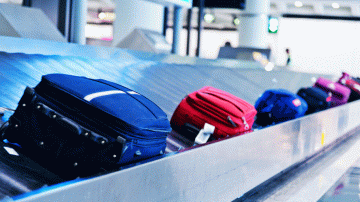
As more travellers seek to avoid checked-bag fees, they’re stuffing more and more belongings into their carry-on luggage. That’s making it harder for security screeners to determine if there is anything dangerous being carried aboard, so the U.S. Transportation Security Administration (TSA) is testing procedures that would see more bags being opened for inspection.
NBC News reported May 24, 2017 that TSA is experimenting with deeper probing of carry-on luggage at security checkpoints in 10 U.S. airports. The procedures include asking travellers to remove all electronic devices larger than cellphones from their bags, along with bulky items like books and food that may obscure the view of security screeners.
The test airports are:
- Boise (Idaho) Airport
- Colorado Springs Airport
- Detroit Metropolitan Airport
- Fort Lauderdale-Hollywood International Airport
- Logan International Airport
- Los Angeles International Airport
- Lubbock (Texas) Preston Smith International Airport
- Luis Muñoz Marín International Airport in San Juan, Puerto Rico
- McCarran International Airport in Las Vegas
- Phoenix Sky Harbor International Airport
“Over the past year, TSA has been adjusting screening procedures at select U.S. airports on a trial basis in an effort to improve screener performance at the checkpoint,” according to a TSA statement. “There are no changes to what is allowed in carry-on bags. Travellers at select test locations may be asked to place certain electronics and other items in a separate bin for screening in an effort to de-clutter baggage. TSA will evaluate the results at these test locations to determine if any future checkpoint procedures should be altered.”











